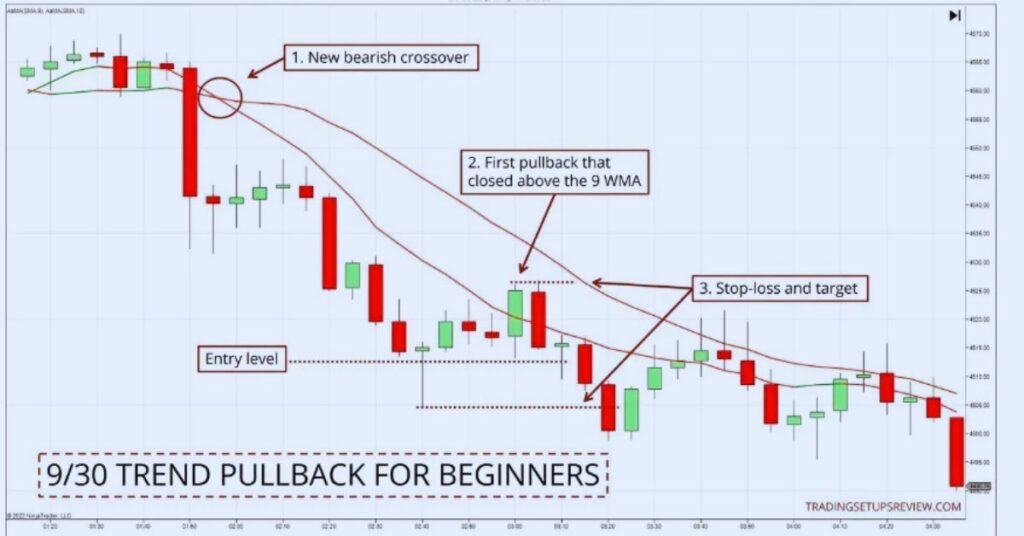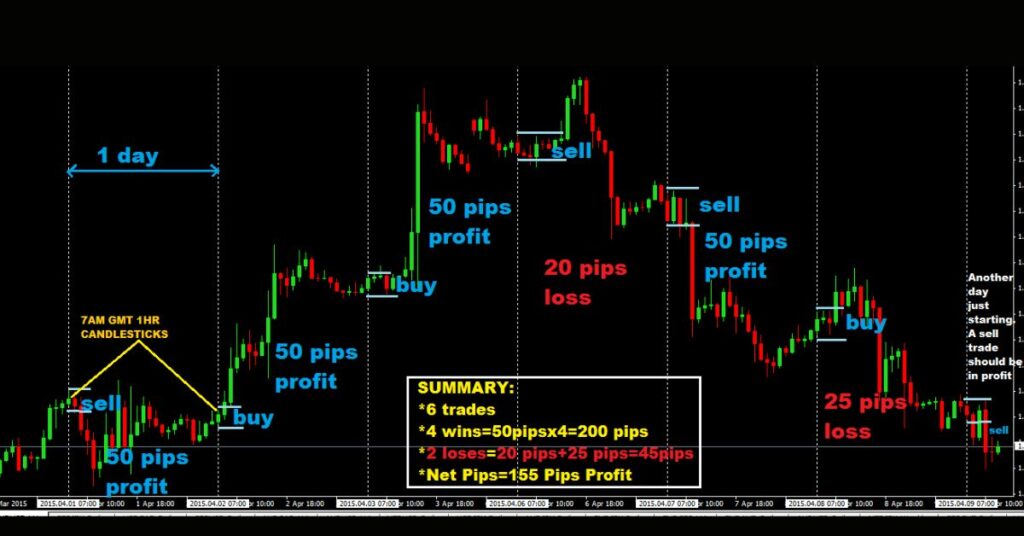The best day trading strategy for beginners is to start with the trend-following strategy. This approach involves capitalizing on the market’s momentum.
Day trading can be intimidating for newcomers, but a solid strategy simplifies the process. The trend-following strategy helps you identify the market’s direction and make trades accordingly. By focusing on stocks that show a clear upward or downward trend, you minimize risks and maximize potential gains.
Beginners should use technical analysis tools, such as moving averages and trend lines, to spot these trends. This strategy not only reduces emotional trading but also provides a structured approach. Remember, consistent learning and practice are crucial for success in day trading.
Table of Contents
Introduction To Day Trading
Day trading involves buying and selling financial instruments within a single trading day. It is a short-term trading strategy aimed at profiting from small price movements. Beginners can find day trading exciting and challenging.
What Is Day Trading?
Day trading is the act of trading stocks, options, or other securities. All transactions happen within the same trading day. Day traders often close all positions before the market closes. They avoid overnight risks.
Benefits Of Day Trading
Day trading offers several benefits to traders:
- Quick returns: Day traders can see profits within hours.
- No overnight risk: Positions are closed by the end of the day.
- High liquidity: Day trading markets are highly liquid.
- Opportunity for learning: Traders gain experience rapidly.
| Benefit | Description |
|---|---|
| Quick returns | Profits can be realized within hours. |
| No overnight risk | Positions are closed by the end of the trading day. |
| High liquidity | Day trading markets offer high liquidity. |
| Opportunity for learning | Traders rapidly gain experience. |
Day trading can be a rewarding strategy for beginners. It requires discipline, patience, and practice. Understanding the basics is the first step to becoming a successful day trader.

Essential Tools
Starting day trading can be exciting yet challenging. To succeed, you need the right tools. Essential tools make the difference between profit and loss. Here are the must-have tools for beginners.
Trading Platforms
A reliable trading platform is crucial. It connects you to the market. Choose a platform that is user-friendly and fast.
| Platform | Features | Cost |
|---|---|---|
| MetaTrader 4 | User-friendly, custom indicators | Free |
| Thinkorswim | Advanced charting, real-time data | Subscription-based |
| Interactive Brokers | Low fees, professional tools | Commission-based |
Market Research Tools
Market research tools help you analyze stocks. They provide valuable insights and data. Use these tools to make informed decisions.
- Yahoo Finance: Free stock quotes, news, and analysis.
- Morningstar: In-depth financial analysis and ratings.
- Bloomberg Terminal: Real-time market data and analytics.
These tools offer various features. Choose one based on your needs. Remember, thorough research is key to successful trading.
Key Strategies
Day trading can be intimidating for beginners. Understanding key strategies can make it easier. Two popular methods are Scalping and Momentum Trading. Each strategy has unique features and benefits. Let’s explore these strategies in detail.
Scalping
Scalping is a quick trading method. Traders make many small trades throughout the day. The goal is to earn small profits from each trade. These small gains add up to significant profits over time.
- Quick Trades: Scalpers hold positions for seconds or minutes.
- High Volume: They make dozens or hundreds of trades per day.
- Minimal Risk: Small price movements reduce the risk of large losses.
Traders need fast decision-making skills. They must also use advanced trading tools. These tools help identify opportunities quickly.
Momentum Trading
Momentum Trading focuses on strong price movements. Traders buy stocks showing upward trends. They sell when the trend starts to weaken.
- Identify Trends: Use charts and indicators to find strong trends.
- Enter Early: Buy stocks as soon as a trend begins.
- Exit Strategically: Sell before the trend reverses.
Momentum traders rely on market news and events. They must stay updated with financial news. This helps them catch trends early.
| Strategy | Key Features |
|---|---|
| Scalping | Quick trades, high volume, minimal risk |
| Momentum Trading | Identify trends, enter early, exit strategically |
Both strategies require discipline and practice. Beginners should start with small amounts. This helps to manage risk and build confidence.

Risk Management
Risk management is vital in day trading, especially for beginners. Controlling risks helps protect your capital and reduce potential losses. It involves setting rules and boundaries for your trades. This section will focus on two key aspects: Setting Stop-Losses and Diversifying Trades.
Setting Stop-losses
A stop-loss order helps limit your losses on a trade. Setting stop-losses means you decide the maximum loss you can afford. This helps you avoid large losses that can wipe out your account.
- Fixed Percentage: Set a stop-loss at a fixed percentage below your entry price.
- Support Levels: Place stop-losses at key support levels on the chart.
- Trailing Stop: Use a trailing stop to lock in profits as the price moves in your favor.
Below is an example of how different stop-loss strategies work:
| Strategy | Description | Example |
|---|---|---|
| Fixed Percentage | Set a stop-loss at a fixed percentage below entry. | Entry price: $100, Stop-loss: 5%, Exit price: $95 |
| Support Levels | Place stop-loss at a key support level. | Support level: $90, Entry price: $100, Stop-loss: $90 |
| Trailing Stop | Adjust stop-loss as the price moves. | Entry price: $100, Price moves to $110, Trailing stop set to $105 |
Diversifying Trades
Diversifying your trades spreads risk across different assets. It helps reduce the impact of a single trade on your overall portfolio.
- Trade Different Assets: Spread your trades across stocks, forex, and commodities.
- Vary Trade Sizes: Don’t put all your capital in one trade. Use different trade sizes.
- Time Diversification: Enter trades at different times to avoid market volatility.
Benefits of diversification include:
- Lower risk of large losses
- More balanced portfolio
- Exposure to multiple market opportunities
By diversifying, you can manage risk better and improve your chances of success in day trading.
Psychological Aspects
Day trading is not just about numbers and charts. Your mind plays a huge role. Understanding the psychological aspects can help beginners succeed. Let’s explore how to manage emotions and maintain discipline.
Managing Emotions
Emotions can cloud your judgment in day trading. Fear and greed are the main culprits. To stay calm, follow these tips:
- Set Clear Goals: Know your profit and loss limits.
- Stick to Your Plan: Do not deviate due to impulse.
- Take Breaks: Step away if you feel overwhelmed.
Keeping a trading journal can also help. Write down your trades and feelings. Review them to learn and improve.
Maintaining Discipline
Discipline is crucial for day trading success. Follow these steps to stay on track:
- Create a Routine: Trade at the same times daily.
- Use Stop-Loss Orders: Protect yourself from big losses.
- Limit Trades: Avoid overtrading to prevent burnout.
Using a checklist can also help. Here is a sample:
| Task | Status |
|---|---|
| Review Market News | ✔️ |
| Set Goals for the Day | ✔️ |
| Check Trading Plan | ✔️ |
Maintaining discipline can prevent costly mistakes. Stick to your plan and routine for better results.

Continuous Learning
Day trading is a dynamic and ever-evolving field. To succeed, you must embrace continuous learning. This ensures you stay ahead and make informed decisions. Let’s explore how staying updated and learning from mistakes can help you thrive.
Staying Updated
Markets change rapidly. Staying updated with the latest news and trends is crucial. Follow these tips:
- Subscribe to financial news websites and newsletters.
- Join online trading forums and communities.
- Attend webinars and online courses.
- Read books and articles by experienced traders.
A well-informed trader makes better decisions. Regularly update your knowledge to stay competitive.
Learning From Mistakes
Mistakes are inevitable in day trading. Learning from them is key to improvement. Here are ways to do so:
- Keep a trading journal. Record all your trades and outcomes.
- Analyze your trades. Identify patterns in your mistakes.
- Seek feedback from more experienced traders.
- Adjust your strategies based on your findings.
By learning from your mistakes, you turn setbacks into valuable lessons.
Frequently Asked Questions
What Is Day Trading?
Day trading involves buying and selling financial instruments within the same trading day.
Is Day Trading Suitable For Beginners?
Yes, with proper education, risk management, and practice, beginners can succeed in day trading.
How Much Capital Do I Need?
Starting capital varies, but $500 to $1000 is often recommended for beginners.
What Are Common Day Trading Strategies?
Common strategies include scalping, momentum trading, and breakout trading.
How Do I Manage Risks?
Use stop-loss orders, set daily loss limits, and diversify your trades to manage risks effectively.
What Tools Do I Need?
You’ll need a reliable trading platform, real-time market data, and analytical tools.
Conclusion
Mastering day trading as a beginner requires patience and practice. Start with a solid strategy and adapt as you learn. Always manage your risk and stay informed. Keep refining your skills, and you’ll improve over time. Remember, consistency is key to success in day trading.
Happy trading!













Leave a Reply